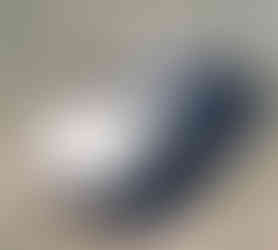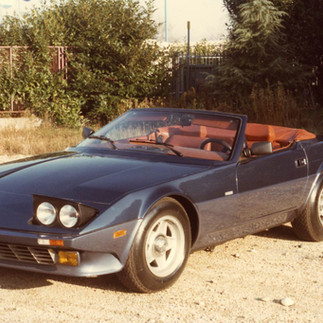The Unforgettable Summer of '74
- Edgardo Michelotti

- Sep 16
- 4 min read
When Ferrari’s name began to shine brightly across the Atlantic, few figures shaped its American allure as decisively as Luigi Chinetti—and fewer still gave form to that allure as brilliantly as Giovanni Michelotti. Through Chinetti’s vision and Michelotti’s pen, Ferrari’s most exclusive clients discovered cars that went far beyond Maranello’s catalog: unique bodies, daring prototypes, and Daytona rebirths that blurred the line between road and dream. This is the story of their partnership, told not from archives, but from memory.
Words by Edgardo Michelotti
Photos and Drawings: Archivio Storico Michelotti www.archiviostoricomichelotti.it

The Encounter of Two Pioneers
The bond between my father, Giovanni Michelotti, and Luigi Chinetti was born in the 1950s through Alfredo Vignale, the Turin coachbuilder and dear friend with whom my father collaborated for more than 15 years. Together, Michelotti and Vignale produced hundreds of cars that would earn worldwide acclaim, marrying elegance with innovation.

Chinetti, a racer of Alfa Romeos and then Ferraris in the early 1950s, had by then retired from competition and looked across the Atlantic for new horizons. Settling in the United States, he brought the Ferrari name to a fascinated clientele, transforming it into a symbol of exclusivity among America’s East Coast elite.
But Chinetti also knew the magic behind the Michelotti–Vignale duo. Soon, he began commissioning special Ferraris for his most discerning clients, cars that would stand apart even in the rarefied world of Maranello’s creations.
Ferrari by Michelotti: 156 Unique Designs
Between the mid-1950s and 1963, Michelotti and Vignale produced no fewer than 156 unique Ferrari bodies out of a total of 311 built—many destined directly for Chinetti’s customers. Their lines varied from the elegant to the audacious, always infused with my father’s relentless pursuit of proportion, lightness, and modernity.
When Michelotti and Vignale parted ways in 1963, the story didn’t end. Chinetti continued to trust my father directly, this time for the projects of N.A.R.T. – North American Racing Team, the private Ferrari squad he had founded. What followed was a decade of experimentation, innovation, and some of the most surprising Ferraris ever built.
The First Exercises: 1967–1968
The first Michelotti-Chinetti prototypes of this new era appeared in 1967: two Ferrari 330s, a coupé and a targa, both characterized by a long tail and a four-headlamp front with Ferrari’s distinctive squared grille.

In 1968 came something even bolder: a gull-wing coupé on a 275P chassis. The concept sketch was drawn by Coco Chinetti, Luigi’s son, but it was my father who translated it into a coherent, buildable design. His touch gave proportion and credibility to what could have remained a dream on paper.
The Daytona Years: 1974–1979
The culmination of this partnership came between 1974 and 1979, when five Ferrari 365 GTB/4 Daytona specials were created by Michelotti for Chinetti.
1974 – The “Marion” Spider/Targa
Commissioned by Chinetti as a gift for his wife, Marion, this metallic blue spider debuted at the Turin Motor Show. Its polyurethane bumpers anticipated the safety trends of the era, while the interior, finished in pale brown leather, combined elegance with comfort.

1975 – The Le Mans Prototype
The following year saw a far more aggressive Daytona. Conceived to race at Le Mans, it wore a striking French-flag livery in white, blue, and red, with partially covered headlights that lifted only for night driving. Inside, blue leather and bold NART lettering on the tail underlined its racing intent. Mechanical issues prevented it from ever starting the 24 Hours, but its presence remains unforgettable.

1978–1979 – The Final Three
Chinetti ordered three more Daytonas, rebodied from accident-damaged cars. Their mechanics were handled by Sergio Rossi, a magician of Ferrari engines, while the styling and full-scale forms came from my father. Sadly, he would never see them completed. In June 1979, illness forced him to set aside his pencils forever.
When my father passed away in January 1980, the first of these last Daytonas had only just been finished. Painted in Ferrari red, it featured an unusually flat, shark-nose bonnet, in stark contrast with the stock Daytona’s domed “gobbone.”

At the 1980 Turin Motor Show, I personally witnessed an unforgettable scene: a distinguished gentleman approached the car, skeptical that such a flat bonnet could conceal a V12. At his request, I opened it to reveal every component in place. The man was astonished—the car had arrived under its own power, on test plates. Only afterwards did I learn who he was: Ing. Fusaro, Ferrari’s CEO. His surprise was a quiet recognition of my father’s ingenuity.
The other two Daytonas followed, painted in elegant two-tone liveries: silver/light grey and light/dark blue. For me, they remain symbols not only of Michelotti’s design but also of continuity—cars that my father conceived and that I, together with his loyal collaborators, ensured would see the light of day.
A Legacy Beyond Cars
The Chinetti-Michelotti projects may never have reached the numbers of Ferrari’s mainstream production, but their impact was profound. They embodied a spirit of daring, of creating automobiles not for the many, but for the few who demanded beauty beyond convention.
They also testify to the unique chemistry between my father and Luigi Chinetti: one a designer of inexhaustible creativity, the other a visionary entrepreneur who understood that in America, exclusivity was the ultimate luxury.
Today, when I look at the photographs of my father with Chinetti, with Giambattista Guidotti, with Marion, or standing next to those Daytonas, I don’t just see cars. I see a dialogue across oceans, a bridge between Italian craft and American desire, and the enduring mark of Giovanni Michelotti on Ferrari’s story.











































































Comments